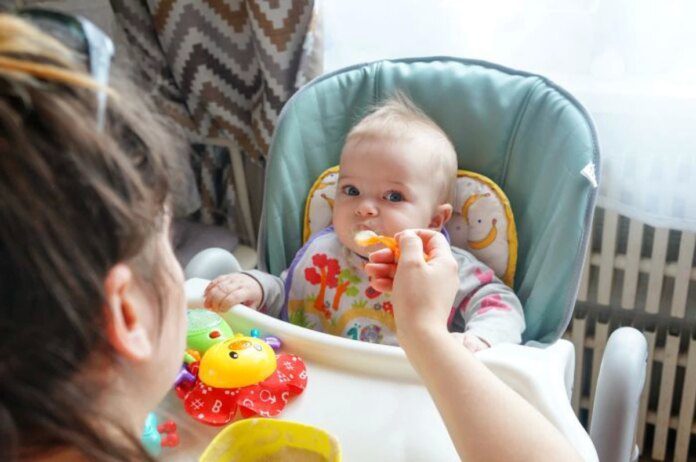
During the first six months of life, milk is the only food that covers your little one’s nutritional requirements and that his body can assimilate. After this age, he can gradually consume solid and semi-solid foods.
In general, doctors recommend starting diversification at six months for full-term, normal-weight infants. On the other hand, if your little one was fed with powdered milk, you will start diversifying his diet earlier, at four months.
Start with fruit juice
The first food you can give your child is natural juice of apples, pears, apricots, peaches or carrots, necessarily home-made. First you will give it a few drops, and gradually, you will increase the consistency of the juice, until it has the form of fruit puree. You can also add fresh cow’s cheese to this puree, which you prepare at home (two lactic calcium tablets are added to 250 ml of cow’s milk).
Cereals, the ideal dinner
The second food to which it is good to get used to your child are flour (cereals) in milk formula, especially for children. To begin with, choose rice, because it does not contain gluten (a component of wheat that can trigger an intolerance). You can give the cereal with milk to the baby for dinner.
Meat, only mixed
Vegetable soup Mashed (vegetables) is the third food you will give your little one, followed by vegetable puree. Three weeks after he started eating vegetable soup, you can get the child used to it meat of poultry or beef, well boiled, mixed or mashed, to which you add a teaspoon of olive oil. After the introduction of meat, the child can also eat yolk of egg, preferably boiled (start with a quarter of a yolk, up to 2-3 per week). Be careful, however, that on the day he eats eggs, you do not give him meat.
Dairy products, not missing from the menu
yogurt it can be consumed without problems by the child after seven months (the plain one is preferable, not the one with fruit, because it contains Es), and after nine months, you can give him puddings, ciulama, bread, polenta, cream, minced meat in the form of periwinkles, bird or calf liver, fruit compote, boneless white fish (trout). Around the age of one year, milk meals will be replaced by diversified ones. Attention, milk should not be missing from the little one’s daily menu.
Do not force him to eat!
Diversification of the baby’s diet must begin with his consent, in no case forcing him. It is very likely that he will refuse new food, but this should not disarm you. Also, the child must be healthy. Never give him two new foods at the same time, it is good to wait at least five days between them, to see if he is not allergic to any food. It is good that the first portions are somewhat smaller, which you will gradually increase. Newly introduced foods must have a liquid or semi-solid consistency, especially up to eight months.
Forbidden foods
Egg white, strawberries, honey, kiwi, raspberries and strawberries can give babies allergies, so they are recommended after 8-9 months. Do not give peanuts, nuts or seeds to a child under one year old, because of the danger of choking or giving allergies.
Until the age of three, the child should not eat pork or mutton, as his body is not ready to digest them. Also avoid spices, processed foods (such as sausages) and acidic drinks. Salt added to food (up to a year, the kidneys are not able to eliminate it normally) and sugar (predisposes to obesity and diabetes) are also to be avoided.
Read also: The correct diet of nursing mothers






































